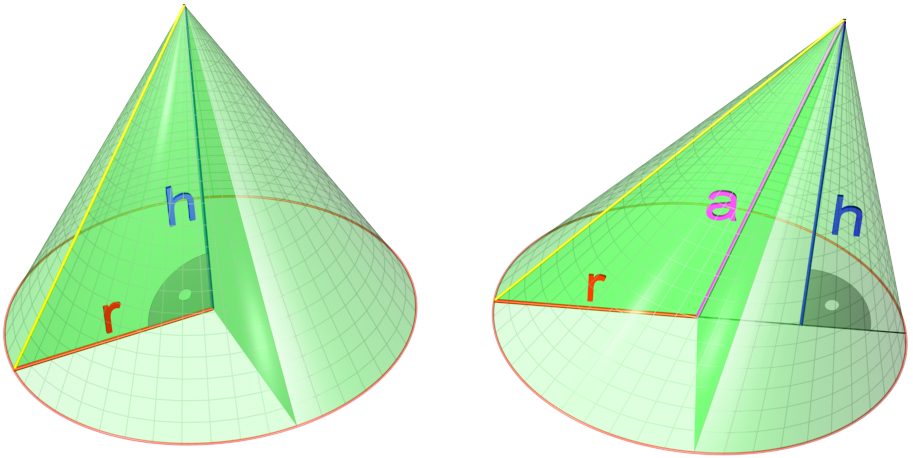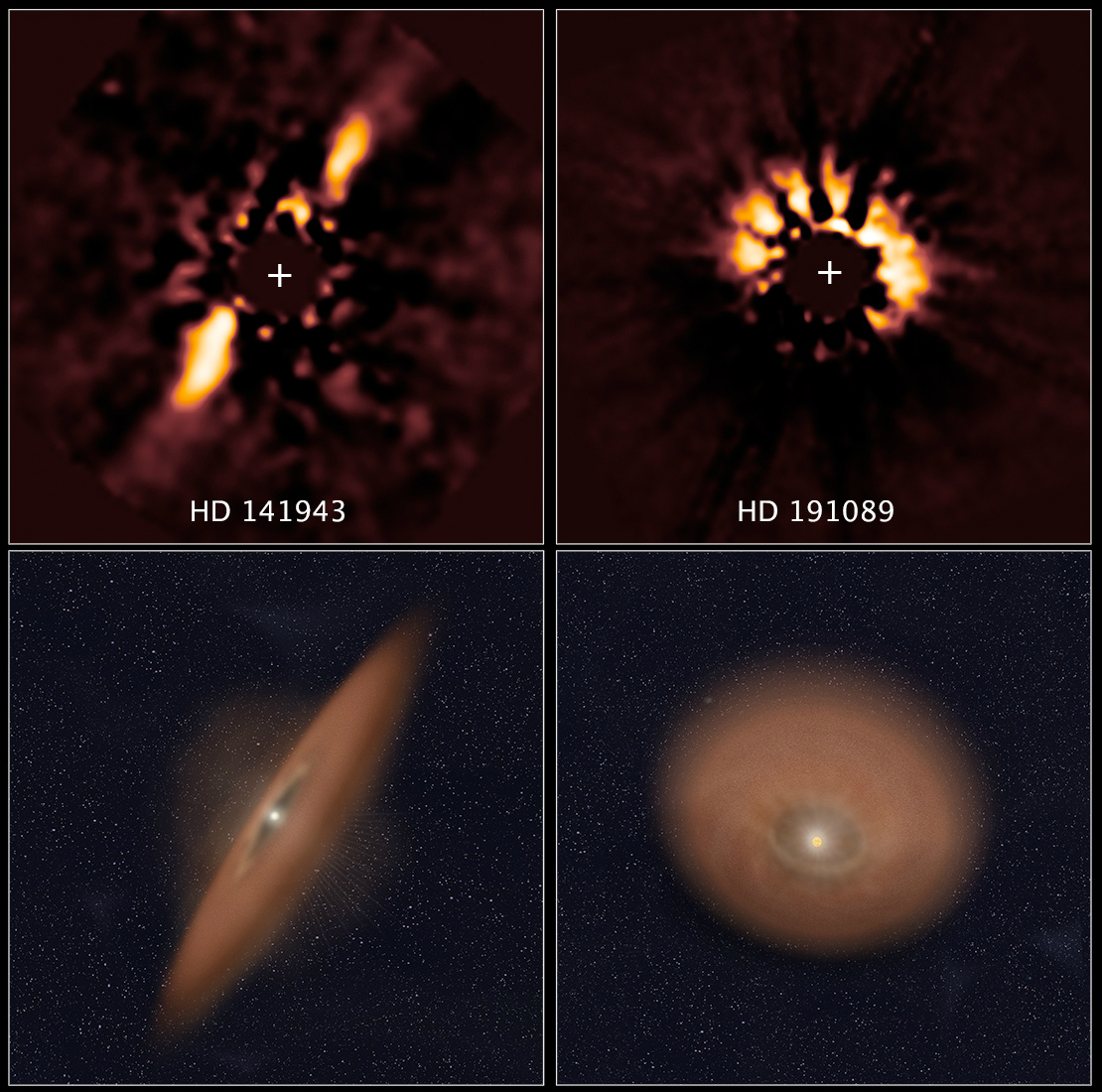|
Inclination Instability
An inclination instability is a dynamical instability that can occur in a disk of objects with eccentric orbits, causing it to form into a conical shape. The gravity of the objects causes an exponential growth of their inclinations while reducing their eccentricities. The inclination instability also results in a clustering of the arguments of perihelion of the objects orbits, similar to what has been observed among the extreme trans-Neptunian objects with semi-major axes greater than 150 AU, it does not produce an alignment of the longitudes of perihelion, however. For an inclination instability to be responsible for the observed clustering, a disk with a mass of 1-10 Earth masses must have existed for over a billion years. This is more than is estimated from current observations, and longer than the timescale of the depletion of the planetesimal disk in models of the early Solar System. Dynamics of the inclination instability In a flat disk of objects with eccentric orbits a smal ... [...More Info...] [...Related Items...] OR: [Wikipedia] [Google] [Baidu] |
Orbital Eccentricity
In astrodynamics, the orbital eccentricity of an astronomical object is a dimensionless parameter that determines the amount by which its orbit around another body deviates from a perfect circle. A value of 0 is a circular orbit, values between 0 and 1 form an elliptic orbit, 1 is a parabolic escape orbit (or capture orbit), and greater than 1 is a hyperbola. The term derives its name from the parameters of conic sections, as every Kepler orbit is a conic section. It is normally used for the isolated two-body problem, but extensions exist for objects following a rosette orbit through the Galaxy. Definition In a two-body problem with inverse-square-law force, every orbit is a Kepler orbit. The eccentricity of this Kepler orbit is a non-negative number that defines its shape. The eccentricity may take the following values: * circular orbit: ''e'' = 0 * elliptic orbit: 0 < ''e'' < 1 * |
Conical
A cone is a three-dimensional geometric shape that tapers smoothly from a flat base (frequently, though not necessarily, circular) to a point called the apex or vertex. A cone is formed by a set of line segments, half-lines, or lines connecting a common point, the apex, to all of the points on a base that is in a plane that does not contain the apex. Depending on the author, the base may be restricted to be a circle, any one-dimensional quadratic form in the plane, any closed one-dimensional figure, or any of the above plus all the enclosed points. If the enclosed points are included in the base, the cone is a solid object; otherwise it is a two-dimensional object in three-dimensional space. In the case of a solid object, the boundary formed by these lines or partial lines is called the ''lateral surface''; if the lateral surface is unbounded, it is a conical surface. In the case of line segments, the cone does not extend beyond the base, while in the case of half-lines, ... [...More Info...] [...Related Items...] OR: [Wikipedia] [Google] [Baidu] |
Perihelion And Aphelion
An apsis (; ) is the farthest or nearest point in the orbit of a planetary body about its primary body. For example, the apsides of the Earth are called the aphelion and perihelion. General description There are two apsides in any elliptic orbit. The name for each apsis is created from the prefixes ''ap-'', ''apo-'' (), or ''peri-'' (), each referring to the farthest and closest point to the primary body the affixing necessary suffix that describes the primary body in the orbit. In this case, the suffix for Earth is ''-gee'', so the apsides' names are ''apogee'' and ''perigee''. For the Sun, its suffix is ''-helion'', so the names are ''aphelion'' and ''perihelion''. According to Newton's laws of motion, all periodic orbits are ellipses. The barycenter of the two bodies may lie well within the bigger body—e.g., the Earth–Moon barycenter is about 75% of the way from Earth's center to its surface. If, compared to the larger mass, the smaller mass is negligible (e.g. ... [...More Info...] [...Related Items...] OR: [Wikipedia] [Google] [Baidu] |
Trans-Neptunian Object
A trans-Neptunian object (TNO), also written transneptunian object, is any minor planet in the Solar System that orbits the Sun at a greater average distance than Neptune, which has a semi-major axis of 30.1 astronomical units (au). Typically, TNOs are further divided into the classical and resonant objects of the Kuiper belt, the scattered disc and detached objects with the sednoids being the most distant ones. As of October 2020, the catalog of minor planets contains 678 numbered and more than 2,000 unnumbered TNOs. The first trans-Neptunian object to be discovered was Pluto in 1930. It took until 1992 to discover a second trans-Neptunian object orbiting the Sun directly, 15760 Albion. The most massive TNO known is Eris, followed by Pluto, , , and . More than 80 satellites have been discovered in orbit of trans-Neptunian objects. TNOs vary in color and are either grey-blue (BB) or very red (RR). They are thought to be composed of mixtures of rock, amorphous carb ... [...More Info...] [...Related Items...] OR: [Wikipedia] [Google] [Baidu] |
Planetesimal
Planetesimals are solid objects thought to exist in protoplanetary disks and debris disks. Per the Chamberlin–Moulton planetesimal hypothesis, they are believed to form out of cosmic dust grains. Believed to have formed in the Solar System about 4.6 billion years ago, they aid study of its formation. Formation A widely accepted theory of planet formation, the so-called planetesimal hypotheses, the Chamberlin–Moulton planetesimal hypothesis and that of Viktor Safronov, states that planets form from cosmic dust grains that collide and stick to form ever-larger bodies. Once a body reaches around a kilometer in size, its constituent grains can attract each other directly through mutual gravity, enormously aiding further growth into moon-sized protoplanets. Smaller bodies must instead rely on Brownian motion or turbulence to cause the collisions leading to sticking. The mechanics of collisions and mechanisms of sticking are intricate. Alternatively, planetesimals may for ... [...More Info...] [...Related Items...] OR: [Wikipedia] [Google] [Baidu] |
Solar System
The Solar System Capitalization of the name varies. The International Astronomical Union, the authoritative body regarding astronomical nomenclature, specifies capitalizing the names of all individual astronomical objects but uses mixed "Solar System" and "solar system" structures in theinaming guidelines document. The name is commonly rendered in lower case ('solar system'), as, for example, in the ''Oxford English Dictionary'' an''Merriam-Webster's 11th Collegiate Dictionary''. is the gravitationally bound system of the Sun and the objects that orbit it. It formed 4.6 billion years ago from the gravitational collapse of a giant interstellar molecular cloud. The vast majority (99.86%) of the system's mass is in the Sun, with most of the remaining mass contained in the planet Jupiter. The four inner system planets—Mercury, Venus, Earth and Mars—are terrestrial planets, being composed primarily of rock and metal. The four giant planets of the outer system a ... [...More Info...] [...Related Items...] OR: [Wikipedia] [Google] [Baidu] |
Perturbation (astronomy)
In astronomy, perturbation is the complex motion of a massive body subjected to forces other than the gravitational attraction of a single other massive body. The other forces can include a third (fourth, fifth, etc.) body, resistance, as from an atmosphere, and the off-center attraction of an oblate or otherwise misshapen body. Introduction The study of perturbations began with the first attempts to predict planetary motions in the sky. In ancient times the causes were unknown. Isaac Newton, at the time he formulated his laws of motion and of gravitation, applied them to the first analysis of perturbations, recognizing the complex difficulties of their calculation. Many of the great mathematicians since then have given attention to the various problems involved; throughout the 18th and 19th centuries there was demand for accurate tables of the position of the Moon and planets for marine navigation. The complex motions of gravitational perturbations can be broken down. The ... [...More Info...] [...Related Items...] OR: [Wikipedia] [Google] [Baidu] |
Torque
In physics and mechanics, torque is the rotational equivalent of linear force. It is also referred to as the moment of force (also abbreviated to moment). It represents the capability of a force to produce change in the rotational motion of the body. The concept originated with the studies by Archimedes of the usage of levers, which is reflected in his famous quote: "''Give me a lever and a place to stand and I will move the Earth''". Just as a linear force is a push or a pull, a torque can be thought of as a twist to an object around a specific axis. Torque is defined as the product of the magnitude of the perpendicular component of the force and the distance of the line of action of a force from the point around which it is being determined. The law of conservation of energy can also be used to understand torque. The symbol for torque is typically \boldsymbol\tau, the lowercase Greek letter '' tau''. When being referred to as moment of force, it is commonly denoted by . ... [...More Info...] [...Related Items...] OR: [Wikipedia] [Google] [Baidu] |
Axis Of Symmetry
Axial symmetry is symmetry around an axis; an object is axially symmetric if its appearance is unchanged if rotated around an axis. glossary of meteorology. Retrieved 2010-04-08. For example, a without trademark or other design, or a plain white tea saucer, looks the same if it is rotated by any angle about the line passing lengthwise through its center, so it is axially symmetric. Axial symmetry can also be |

.png)



